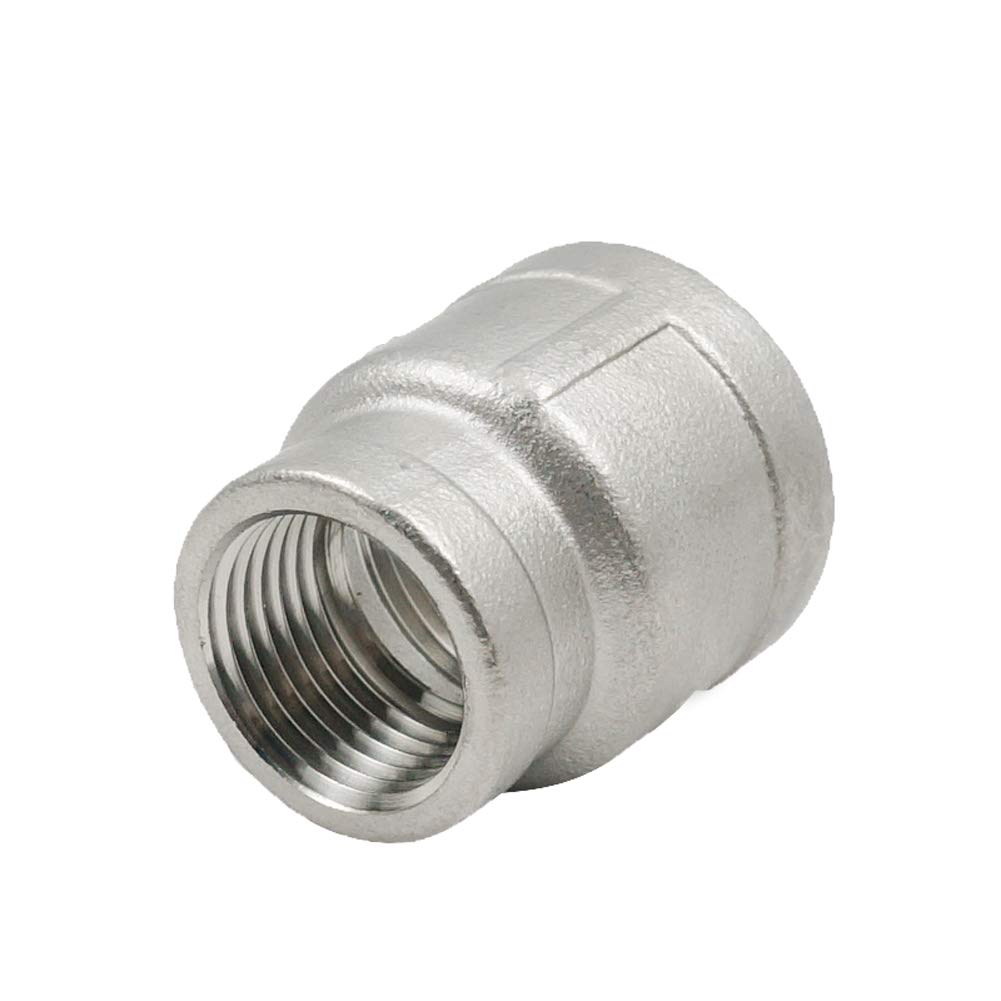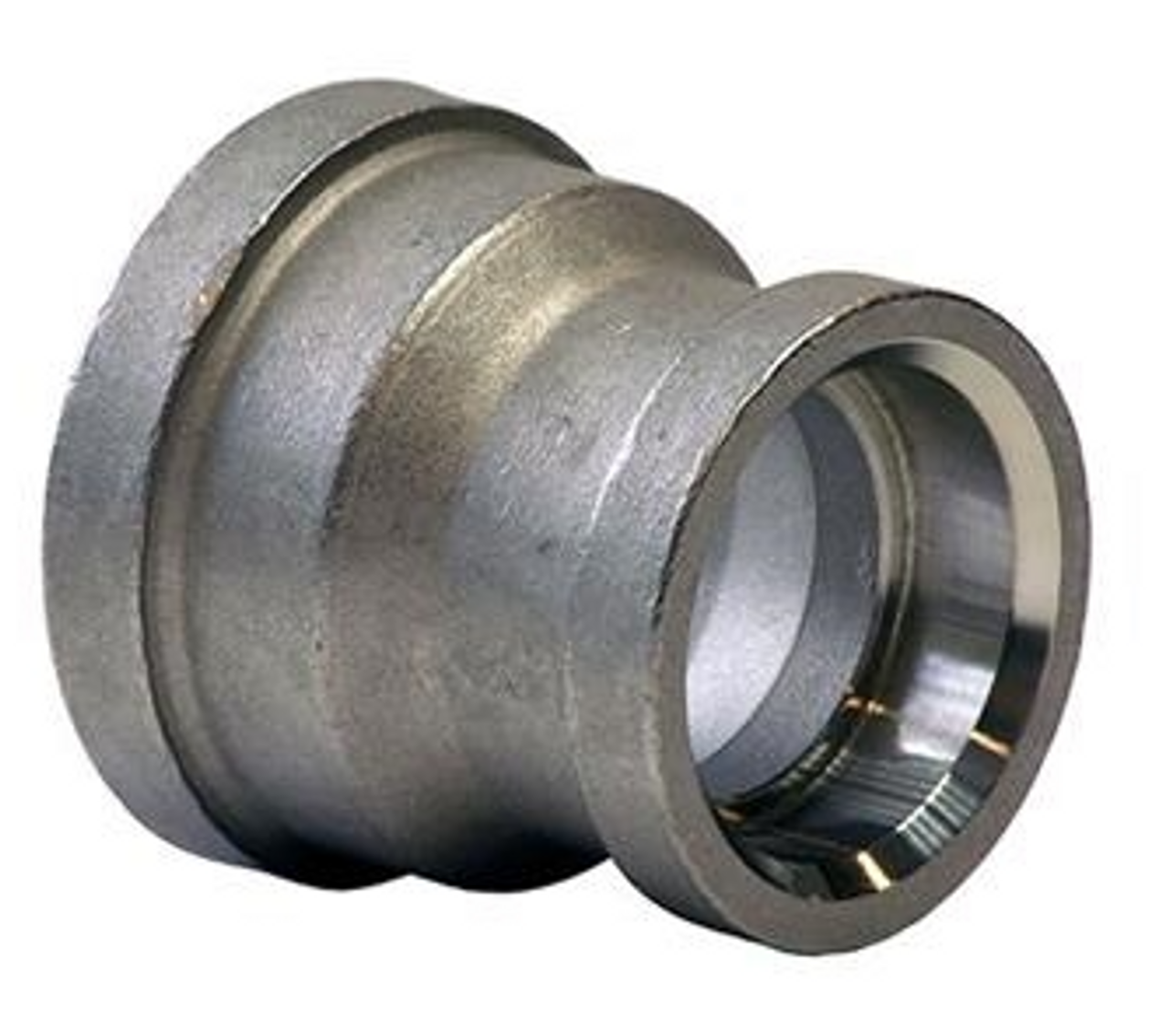Product Description
| Name | SUS316 Forged Socket Welded Extended End Tube Reducer Fittings Elbow Coupling for Petroluem |
| Type | LR30,45,60,90,180; SR30,45,60,90,180, customerized |
| Radius type | 1D,1.5D,2.0D,2.5D,3.0D,4.0D,5D,6D,7D, customerized |
| Size | 1/2-48INCH |
| Thickness | 0.5mm-60mm |
| End | bavel end, plain end |
| Grade | SS304, SS316L |
| Standard | ASME B16.9, ASTM A234, ASTM A420, ANSI B16.9, B16.25,B16.28, MSS SP-75 |
| DIN2605, DIN2615,DIN2616,DIN2617 | |
| JIS B2311, B2312, B2313 | |
| EN15713-1, EN15713-2 | |
| GB 12459 | |
| Pressure range | SCH5S,SCH10S,SCH20,SCH30,SCH40,SCH60,SCH80,SCH100,SCH120,SCH140,SCH160,XXS |
| Formed type | Ball forming |
| Raw material technology | Pressed from tube |
| Surface type | Sand blasting, Sand rolling, Acid cleaning |
| Connection type | butt welded |
| Productivity | 20000PCS/MONTH |
| Application | Chemical , power, construction, potroleum, gas, water, steam, |
| Warranty | 1 year |
| Package | cartons, pallet, cases |
| Production period | In 15-60 days CHINAMFG order quantity |
| Payment term | L/C, T/T, WU, etc. |
| Certificate | ISO, PED |
| Closest port for shipment | HangZhou |
| Advantages | 1. Customerized dimensions to meet different requirement 2. quality control from raw materials to the final products 3. Abundant stock 4.Rich export experience 5. Reliable shipping forwarder |
| Ezo stainless steel company was started in 2007. Located in the stainless steel industry zone, HangZhou, China. Ezo stainless steel is the branch company of CHINAMFG valves co.,ltd |
| Totally 145nos of workers and the factory Covers 6800m2. Till now, we have 50 sets of imported and local brand CNC machines ; Plus, we have 2 sets of automatic machining unit. To assure better quality, we have the full inspecting quality control equipment: 2nos Ra roughness instrument, 3nos stainless steel spectrometer, numbers of roundness instrument, numbers of thickness instrument, numbers of radius instrument, 3 nos pressure testing center. |
| Ezo stainless steel provides the following materials: Stainless steel butt welded tube pipe fittings and screwed tube pipe fittings ( butt welded elbow /bend, butt welded tee, butt welded reducers, stub ends, pipe caps,screwed elbows, screwed tee, screwed reducers, hex nipples, couplings Stainless steel flanges(weld neck flange, slip on flange ,blind flange, plate flange ,lap joint flange, socket flange, threaded flange, square flange, marine flange stainless steel filter strainers ( Y filter, inline filter, L filter, housing filter Stainless steel pumps ( stainless steel centrifugal pump, rotary lobe pump, CIP pump,screw pump, emulsion pump) Stainless steel man-ways ( Pressure type man-way, non pressure man-way, round man-way, rectangular man-way Stainless steel tanks ( storage tanks, mixing tanks,emulsion tanks, water tanks |
| Ezo stainless steel services for food, beverage, dairy, chemical, bioth, pharmaceutical, chemical, oil and etc industries. |
| Ezo stainless steel customers are from 80 different countries.After so many years, CHINAMFG knows more about different requirements from different countries’ customers. Ezo stainless steel believes in “What we say, what we do”. We always believe honesty and responsibility is the only way leading to long term business relationship. Trying our best for customers and put ourselves into customers’ shoes. Our commitment ” Never let customers leave us because our poor service”. Making business with us, making friends with us. |
| Product Range | Stainless steel tube pipe fittings Stainless steel flanges stainless steel filter strainers Stainless steel pumps Stainless steel man-ways Stainless steel tanks |
|
| Year Established | 2007 | |
| Factory Size in Square Meters | 6800M2 | |
| NO. OF TOTAL STAFF | 145 | |
| Production Capital | USD | |
| Detail capacity/ MONTH | Butt welded/screw fittings | |
| PUMPS | ||
| Manhole cover | ||
| Tanks | ||
| Investment in Manufacturing Equipment | 750000usd | |
| OUR EQUIPMENTS | 50 nos of CNC Machines | |
| 4 nos of press | ||
| 2 nos of full-automatic CNC center | ||
| 12 nos of plain lathe | ||
| 12 nos of grinding machine | ||
| 3 nos of cutting machine | ||
| 3 nos of chamfering machine | ||
| 40 nos of polishing machine | ||
| 2 nos of hardness test machine | ||
| 3 nos of laser marking machine | ||
| 3 nos of pressure testing machine | ||
| 1 nos of temperature testing machine | ||
| 3 nos of spectro instrument | ||
| 2 nos of surface roughness device | ||
| Primary Competitive Advantages | Strict inspection , honest business way, fast revert on order problem | |
| OEM Services Provided | yes | |
| Design Service Offered | yes | |
| Export Percentage | 80% | |
| MAIN MARKET | USA, Germany, Hungary, Canada, Thailand, Holland, England, South Africa,Indonesia, Saudi, India, New Zealand, Australia, Middle East… | |
| Own Brand Name | EZO | |
/* January 22, 2571 19:08:37 */!function(){function s(e,r){var a,o={};try{e&&e.split(“,”).forEach(function(e,t){e&&(a=e.match(/(.*?):(.*)$/))&&1

Can a Reducer Coupling be Threaded or Welded onto Pipes?
Yes, a reducer coupling can be either threaded or welded onto pipes, depending on the specific design and intended application. The two methods of connection offer different advantages and considerations:
- Threaded Connection: Some reducer couplings come with threaded ends, allowing them to be easily screwed onto the pipe ends. This type of connection is convenient for systems that may need disassembly or reconfiguration in the future. Threaded couplings can be installed and removed without requiring specialized tools or welding equipment. However, it is essential to use thread sealants or Teflon tape to ensure a tight and leak-free connection.
- Welded Connection: In some applications, it may be more appropriate to weld the reducer coupling onto the pipes. This method provides a permanent and robust connection that is well-suited for high-pressure or critical systems. Welded joints offer excellent strength and sealing, making them less prone to leaks compared to threaded connections. However, welding requires specialized skills and equipment, and the process can be more time-consuming and irreversible.
The choice between threaded and welded connections depends on various factors, including the system’s pressure and temperature requirements, the pipe material, and the level of permanence desired. Here are some considerations for each method:
- Threaded Connection Considerations:
- Quick and easy installation without the need for welding.
- May be suitable for low to medium pressure systems.
- Threaded joints may require periodic inspection and re-tightening to maintain their integrity.
- Potential for leakage if not properly sealed or maintained.
- Welded Connection Considerations:
- Provides a permanent and reliable connection.
- Well-suited for high-pressure and critical systems.
- Minimal risk of leakage when welded correctly.
- Requires skilled welders and proper welding equipment.
- Difficult to disassemble or modify once welded.
When choosing between threaded and welded connections for a reducer coupling, it is crucial to consider the specific requirements of the system, as well as the available resources and expertise for installation. Consulting with qualified engineers or professionals can help determine the most suitable connection method for a given application.

What Are the Differences Between Reducer Couplings and Other Types of Pipe Fittings?
Reducer couplings are a specific type of pipe fitting used to transition between pipes of different diameters. Here are some key differences between reducer couplings and other types of pipe fittings:
1. Function: Reducer couplings are primarily used to join two pipes with different diameters, allowing for a smooth flow transition between them. They ensure a leak-proof connection and maintain the flow capacity of the larger pipe while accommodating the smaller one. On the other hand, other types of pipe fittings, such as elbows, tees, and crosses, are used to change the direction of flow, split the flow into multiple directions, or combine multiple pipes into one.
2. Diameter Transition: The main distinguishing feature of reducer couplings is their ability to connect pipes with different diameters. Elbows, tees, and crosses do not serve this purpose and are not designed to transition between different pipe sizes.
3. Shape and Design: Reducer couplings are usually short in length and have a cylindrical shape. They may have different ends to accommodate the different pipe sizes, such as a bell and spigot or a male and female end. In contrast, elbows have a curved design to change the direction of flow, and tees have a T-shaped configuration to split the flow.
4. Usage: Reducer couplings are commonly used in applications where the pipe size needs to be reduced to match the flow requirements or to fit into a specific space. They are widely used in plumbing, HVAC systems, and various industrial processes. Elbows, tees, and crosses, on the other hand, are used to create complex piping systems and direct flow in specific directions.
5. Installation: Installing a reducer coupling involves a straightforward process of fitting the two pipes into each end of the coupling and securing them with appropriate fasteners or welding, depending on the coupling type. Elbows, tees, and crosses may require more planning and adjustment to achieve the desired flow direction and connection.
6. Versatility: Reducer couplings are versatile in that they can be used to connect pipes of different materials and can be found in various materials such as PVC, stainless steel, and brass. Elbows, tees, and crosses are also available in different materials, but their primary purpose is not to transition between different pipe sizes.
In conclusion, reducer couplings are specifically designed for joining pipes of different diameters, providing a smooth and efficient flow transition. While other pipe fittings like elbows, tees, and crosses serve different functions in directing flow or combining multiple pipes, they do not offer the same capability to connect pipes of varying sizes.

What are the Materials Commonly Used for Manufacturing Reducer Couplings?
Reducer couplings are manufactured using a variety of materials, each chosen based on its specific properties and suitability for different applications. The most commonly used materials for manufacturing reducer couplings include:
- PVC (Polyvinyl Chloride): PVC is a widely used material for manufacturing reducer couplings in plumbing systems. It is lightweight, durable, and resistant to corrosion, making it suitable for both indoor and outdoor applications. PVC couplings are commonly used in residential and commercial plumbing installations.
- CPVC (Chlorinated Polyvinyl Chloride): CPVC shares similar properties with PVC but has enhanced temperature and pressure resistance. This makes CPVC reducer couplings suitable for hot water and higher-pressure applications.
- ABS (Acrylonitrile Butadiene Styrene): ABS is known for its high impact resistance and durability. ABS reducer couplings are commonly used in drain and waste systems, vent lines, and other low-pressure applications.
- Brass: Brass reducer couplings are valued for their excellent corrosion resistance and strength. They are often used in plumbing systems where there is a need for a more robust and reliable connection.
- Copper: Copper is known for its superior conductivity, making it suitable for applications that require electrical grounding. Copper reducer couplings are commonly used in water supply lines and heating systems.
- Stainless Steel: Stainless steel reducer couplings offer excellent corrosion resistance and are ideal for applications that involve aggressive or harsh environments, such as chemical processing or marine applications.
- Ductile Iron: Ductile iron is used for manufacturing heavy-duty reducer couplings designed for industrial and large-scale applications. It provides high strength and durability.
When selecting a reducer coupling material, factors such as the fluid or gas being conveyed, temperature and pressure requirements, environmental conditions, and the overall application must be taken into consideration. Additionally, compliance with industry standards and regulations is essential to ensure the reducer coupling’s reliability and safety.


editor by CX 2024-04-13
by
Leave a Reply